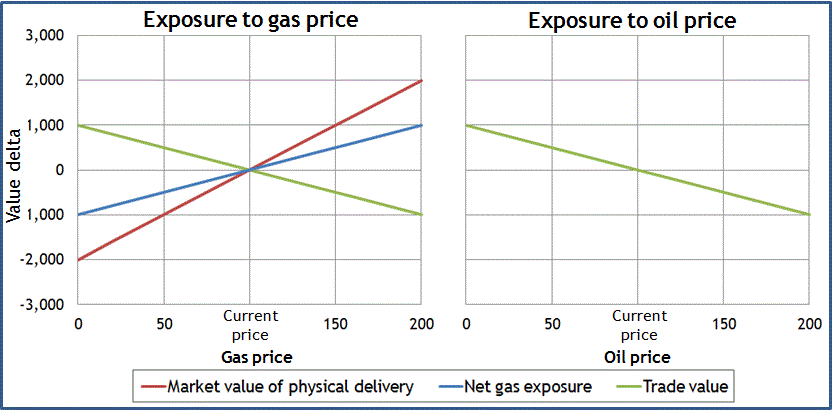This is the first in a series of articles on the principles of energy risk management, written by Nick Perry.
The business of energy companies increasingly revolves around the management of portfolio risk. Risk associated with customer contracts, supply agreements, upstream assets and hedge books. But the term ‘risk management’ is often narrowly applied to refer to the trading risk control function. While risk control is one aspect, risk management is a much broader and more powerful discipline, one that should enhance a company’s commercial advantage, rather than hinder it. In this, the first in a series of articles on risk management principles, we set out some of the common misunderstandings about energy risk management.
What is risk management about?
Several popular misconceptions about financial Risk Management are to be found in energy companies:
- It is an arcane discipline, the preserve of a handful of specialists in a best-avoided corner of the building
- It is well-enough understood by those who need to know, and irrelevant to those who don’t
- Its role is essentially negative, applying the brakes to over-exuberant traders and overly-creative deal-makers
- It’s all about options and Black-Scholes
- It may be relevant in highly liquid markets, but gas and power rarely fit this description
- Companies that are vertically integrated are ‘naturally hedged’, and don’t need risk management much at all
Years of acquaintance with energy players whose origins lie in the physically-oriented realms of utilities, upstream producers and large end-users make it easy to see how these ideas take root. And any notion that in 2014 they are a thing of the past is disabused in the first morning of any risk management training session.
All about options?
Let’s start with the point about options. If anyone new to risk were diligently to search out one of the several excellent books on energy risk management they would probably find that Chapter 1 lists some of the well-known energy trading scandals and is easy enough to read. Then comes Chapter 2 – on Options; Chapter 3 is on More Options; and Chapter 4 is on Exotic Options … and for those whose advanced maths is some years behind them, enthusiasm soon wanes.
The reason for this bias towards options is easy enough to deduce. The ‘textbook’ authors typically come from a background of strong academic credentials. They tend to give a cursory treatment to the basics of hedging positions with linear exposures (or constant delta), in order to focus on the more academically challenging problems presented by non-linear exposures.
However a great number of the practical risk management problems that arise in energy companies have nothing to do with options. Firstly, even basic hedging in energy markets is rarely as simple to execute as for less ‘granular’ commodities in more liquid markets. Secondly, many foundation-level aspects of financial risk management are deeply non-intuitive, or even counter-intuitive to those coming to the issues for the first time.
Take this two minute challenge
Take this simple challenge: a significantly simplified version of the most basic type of contract in the industry – a gas purchase with price indexed to oil.
A gas buyer purchases 20 volumetric units of physical gas under a contract in which the price is indexed 50:50 to the spot prices of oil and of gas itself. Delivery is taken at a location where there are liquid markets for both gas and oil. For simplicity the contract price = 0.5 x spot oil price + 0.5 x spot gas price, both in the same currency, price and volume units. What, measured in volumetric units, are the exposures (if any) to the oil price and gas price for the buyer?
Hint: price exposure is generated from both the pricing terms of the deal and the underlying physical delivery of gas. The latter is often overlooked by those new to the concepts. This is illustrated in the following chart.
Chart 1: linear exposures of a simple indexed gas physical deal

I reckon there are 25 possible answers that might be under consideration. Given the various dimensions and numbers in play (oil, gas, 20, 50%), then you might be thinking the exposures (deltas) must be one of +20, +10, 0, -10 or -20, for each of oil and gas. When I set this puzzle in training workshops, I regularly get as many answers as there are people in the room – sometimes without hearing the correct one! And yet, as everyone quickly grasps, this is about as simple a real-life energy risk problem as could be posed – with not an option in sight.
The arithmetic is not the issue here – indeed most delegates to energy risk training come from highly numerate disciplines such as engineering and accounting. It is rather the ability to internalise new, rigorous ways of analysing apparently straightforward business scenarios that are not widely taught beyond the trading floor.
Fixed price, floating price
Another common misconception is that exposure to ever-changing spot prices is the fundamental source of financial risk. Indeed, when told that it is in fact fixed-price positions (in liquid, variable-price markets) that are the root cause of price risk, and that floating-price positions are risk-neutral, some delegates in risk training sessions actually resist this basic assertion.
If there is an explanation for the misconception, it probably lies in the fact that for many companies, before energy is procured (or sold) there has already been some prior commitment made within the corporate portfolio that equates analytically to an implicit short (or long) fixed-price energy position. For example, an automobile manufacturer may have committed to a price list that must be maintained for 12 months, and in consequence may be implicitly short energy (and steel and other raw materials). Staff from such a background may subliminally be recognising the need for a hedge, and therefore conceive of floating energy prices as a source of risk – instead of identifying the initial commitment to the price list as the primary source.
This floating price risk focus is more common among demand-side players for whom energy is only a part of their business. However it can also be found within utilities. The shift in utility business models towards portfolio management via centralised trading functions has significantly improved the level of understanding of risk exposures. But people within utilities have often come from a background where ‘marking to portfolio’ is more readily adopted than marking to market. Given this background, several aspects of risk management can be non-intuitive, and several ‘Chapter One’ issues can represent new perspectives requiring new analytic disciplines.
There are excellent reasons why these perspectives and disciplines need to be more widely shared across the company – going well beyond the requirements of staffing the middle office. All commercial staff, and many managers at all levels, will conduct much better business with a good grasp of the principles involved.
Options again
When we get deeper into the subject, it turns out to be quite appropriate to develop a fixation on options in energy. Energy portfolios are rich with optionality and non-linear exposures. This can be envisaged quite readily for example by recognising that a good way of analysing capacity in an oil refinery, is as ‘a call-option on the crack spread’ or capacity in a CCGT as ‘a strip of call-options on the spark spread’. But that is a relatively sophisticated thought process, and certainly not material for Chapter One. We shall, however, consider it later in this series of articles – after looking next at some of the almost unique risk characteristics of the energy sector, and how techniques from the trading floor need to be adapted and enhanced to cater for them.
Nick Perry is a Senior Advisor with Timera Energy. He has extensive energy industry expertise specialising in portfolio & transaction structuring, risk management, market dynamics and regulatory issues. He has spent over 20 years working in the gas and power industries for Exxon, Amoco and Enron, where he was a Board Director of Enron Europe.
